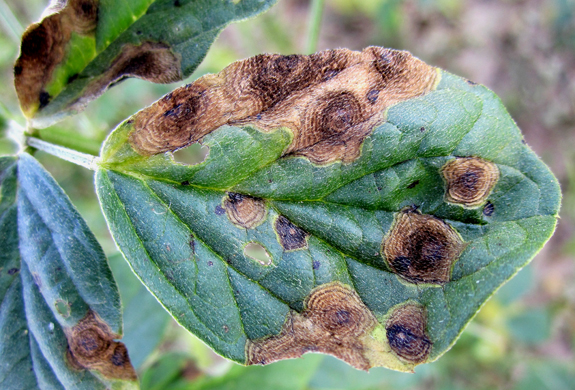Alternaria Blight (Early Blight)

This fungal blight infects ornamental plants, vegetables, fruit trees, and shade trees worldwide. On tomatoes, potatoes, and peppers, it is called early blight. On leaves, brown to black spots form and enlarge, developing concentric rings. Heavily blighted leaves dry up and die as spots grow together. Lower leaves usually show symptoms first. Targetlike, sunken spots will develop on tomato branches and stems. Fruits and potato tubers also develop dark, sunken spots. Alternaria spores are carried by air currents and are common in dust and air everywhere. They are a common cause of hay fever allergies. Alternaria fungi overwinter on infected plant parts and debris, or in or on seeds. Control this disease by planting resistant cultivars and growing your own transplants from disease-free seed. Apply Trichoderma harzianum to the soil just before planting. Promote good air circulation. For early blight, apply potassium bicarbonate (baking soda) sprays starting 2 weeks before the time of year when symptoms would normally first appear. Dispose of infected plants and when possible, use a 3-year rotation.

